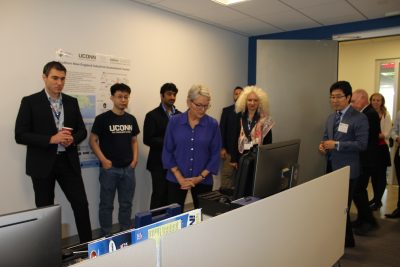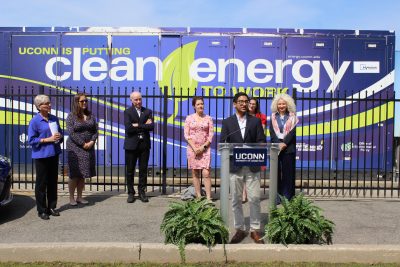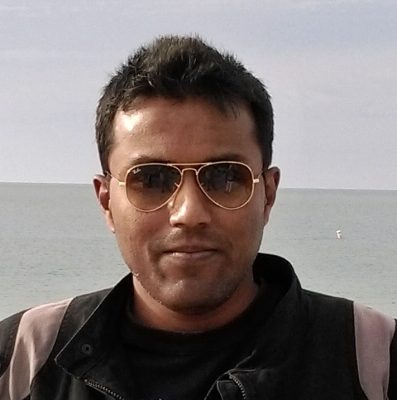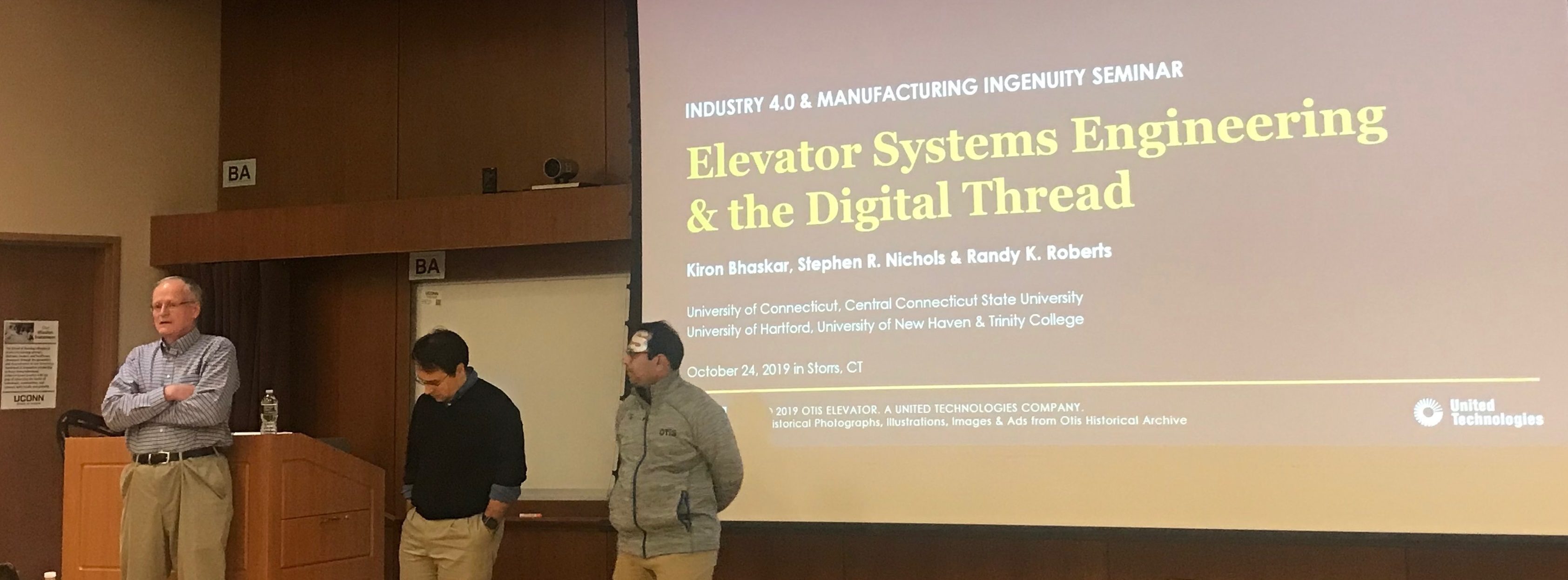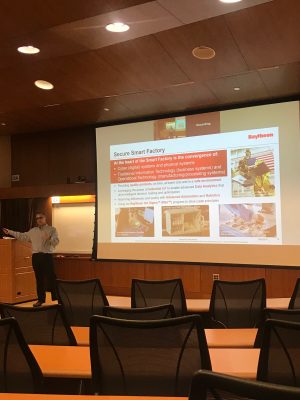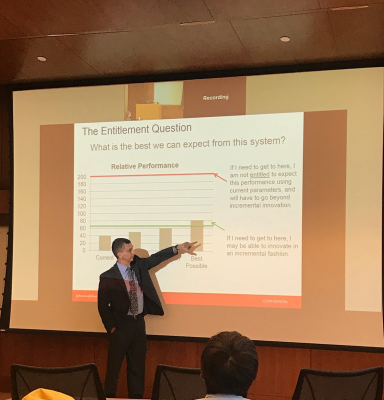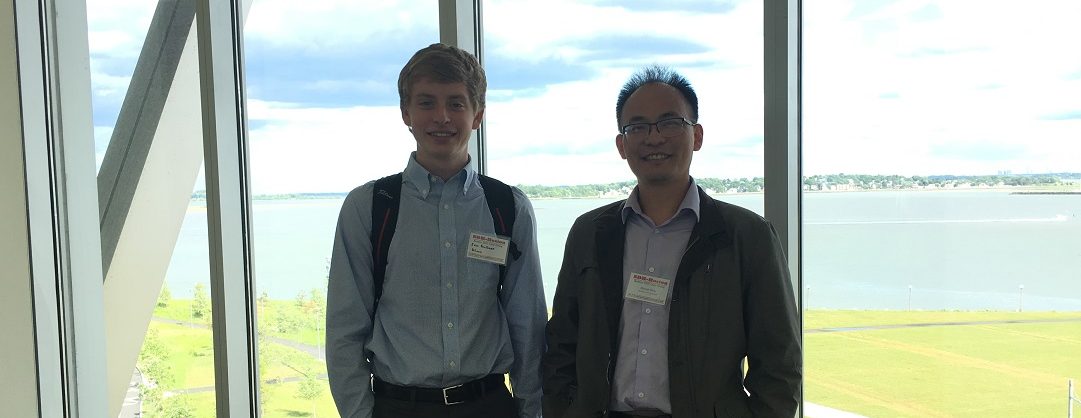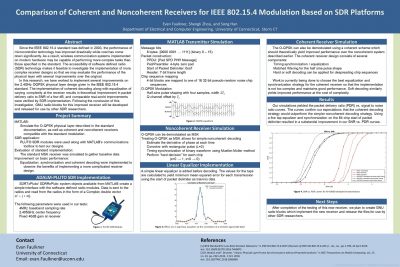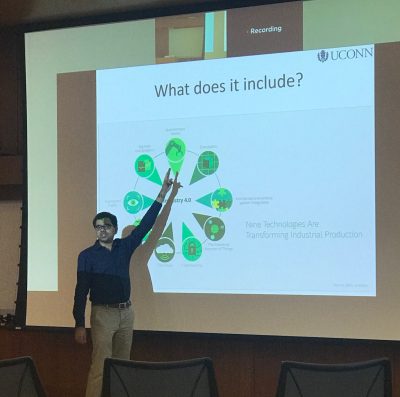Solar thermal technology has huge, untapped potential, and UConn researchers are making tools to help manufacturers realize the possibilities and take the plunge for renewable energy

Solar thermal arrays like the one that Stuber used in his research on desalination hold great promise in helping industries embrace renewable technology and transition away from fossil fuels. (Contributed photo)
The sixth UN Intergovernmental Panel on Climate Change report, which came out in the spring of 2022, was clear: technologies are available now to make the transition away from a fossil-fueled economy. However, making these swift changes is not as simple as flipping a switch.
For industry, rigorous guarantees are needed before decisions and costly investments are made, and UConn engineering researchers have developed a dynamical model to help companies determine if renewables make economic sense.
Pratt & Whitney Associate Professor in Advanced Systems Engineering Matthew Stuber worked with two undergraduate students and co-lead authors Justin Rastinejad ’22 (ENG) and Sloane Putnam ’22 (ENG) answer this question in their recent paper published in Renewable Energy.
Stuber explains that this research answers a question he has been thinking about for several years now, “How do we start incorporating renewable energy into conventional industrial processes? Is it always worth it? The alternative is to buy energy in the form of fossil fuels, invest in renewables, or generate energy onsite through renewable means.”
The answers require accounting for many variables, including costs, power inputs and outputs, and determining which renewable technologies to adopt in lieu of fossil fuels. It is complex and non-linear, says Stuber, and must account for fluctuations in generation, since renewables are reliant on conditions like the sun and wind. The most accurate estimations require a rigorous evaluation process, and oftentimes manufacturers simply do not have the time and resources to perform these complicated assessments.
“My original work in this area was focused on desalination and water treatment in applications for agriculture where there is a lot of wastewater, a lot of water scarcity, and a lot of water consumption,” Stuber says. “This is at the heart of the food, energy, and water nexus. The one thing I was trying to answer was how do you do this sustainably? If it is a very energy or resource-intensive process, maybe we can use renewable energy to help reduce our climate impact, and stop this feedback loop from happening, because basically, water scarcity and drought are tied to climate change, and burning fossil fuels is contributing to climate change. This research is a holistic approach to the problem.”
The new paper focuses on questions surrounding incorporating renewable solar energy and determining which kind would be feasible to use in manufacturing processes. The solar technology that most people can recognize is photovoltaic (PV), which generates electricity using solar panels that collect sunlight and convert solar energy to electricity. The other technology is solar thermal, where the sun’s rays are concentrated (akin to a magnifying glass) and the energy is transferred to fluid within pipes, where it can be stored or transferred further in the form of heat. Though solar thermal has been used for years in many other areas of the world, and it has great promise for use in industrial applications, it was largely forgotten in the U.S. after the price for natural gas plummeted alongside increased rates of fracking.
“Most manufacturing processes require heat in some form, they might be using steam to sterilize or drive something, or they might use other kinds of thermal sources in their manufacturing process,” says Stuber. “Manufacturing is a huge chunk of the economy and it’s a huge energy consumer. Recent releases from the Department of Energy announce projects to electrify everything.”
Electrification can seem daunting, but renewables like solar thermal start to make more sense than “conventional” power sources in some scenarios. Stuber says that if you approach the problem from a power plant perspective, currently the process essentially turns fuel (fossil or nuclear) into thermal energy, and thermal energy into electricity (by powering turbines), which sends electricity to the grid. Manufacturers then take the electricity and convert it back to thermal energy for their needs.
To look for a better process, researchers set out to see if solar power generated on-site was a feasible option.
“A decade ago, when we were looking at this problem, we argued that thermal would be better for certain applications,” says Stuber. “However, with the massive reduction in the cost of photovoltaics, we were seeing photovoltaic prices plummeting, and everyone was saying PV is the way to go for everything. Now we’re 10 years on and I was wondering where we are today.”
The researchers performed a formal analysis of a hypothetical manufacturing process that requires heat in different regions of the United States, including California, Massachusetts, and Colorado, to test different solar resource availability and holistically assess economic viability.
They created a mathematical model, and the results were promising.
“The main takeaway is that batteries are extremely expensive, and they don’t make sense in the manufacturing sector right now, but solar thermal wins. If you have a manufacturing process that needs heat within a certain temperature range, solar thermal is going to be the choice for you,” Says Stuber.
The results showed that solar thermal is a viable choice to reduce fossil fuel reliance for industries that rely on low to medium heat for processes, regardless of location or scale.
“This model is highly adaptable. It can account for changes in location, process size, natural gas price, and many other specifications. This helps companies decide where and how to install a solar-powered industrial site,” says Rastinejad.
The model is available on GitHub to be used by anyone hoping to perform their own assessments. Stuber says this model can be helpful not just for companies but for anyone looking to do this type of rigorous analysis.
“The model simulates the exact performance of the system on an hourly basis over an entire year. It’s taking in near real-time solar data and simulating if the technology would be sending energy to the process, storing it, discharging the storage, or using backup energy if there is cloud cover. The model represents the performance of the system and can help with accurate design and more accurate economic estimates of the cost or cost savings of implementing renewable technology.”
Without a rigorous and accurate analysis, it is not possible to know for certain if these kinds of upgrades are economically viable. We need to quickly transition away from fossil fuels, the researchers hope this tool will help.
“My goal with this paper is to convince companies, policy makers, and the general public that they now have the tools to make costly decisions with confidence; I want the reader to understand that anyone can adapt this model to find the best configuration of hybrid solar thermal power for their own site-specific conditions,” says Putnam.
Stuber is now working with a team of undergrads as part of the Clean Energy and Sustainability Innovation Program (CESIP) to look at strategies to decarbonize UConn using some of the same ideas from this paper,
“Can we install renewable energy around campus to offset energy needs? I see this assessment as an important tool in addressing those concerns,” says Stuber.






